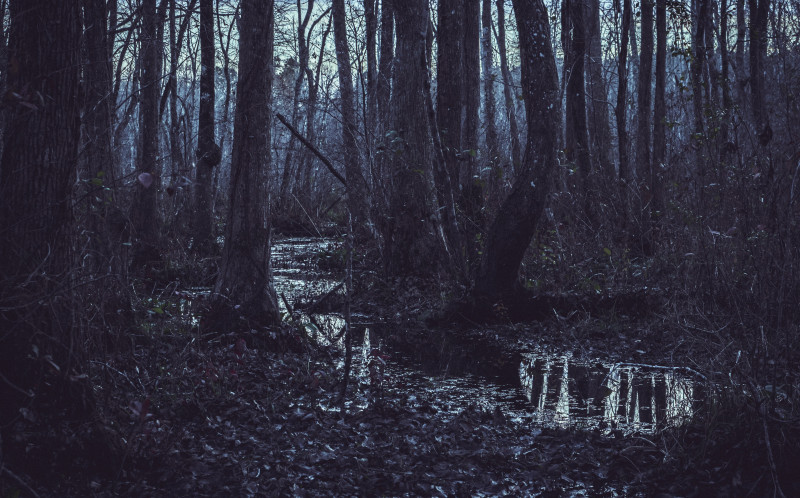Louisiana is rife with local folklore, particularly stemming from the untouched acres of the Honey Island Swamp just a short drive from New Orleans. These legends are of the pirates of the Bayou who were said to have hidden buried treasures, Native American ghosts, and the mysterious green lights that lure unsuspecting night travelers into the depths of the swamp, never to be seen again. These are just a few examples of all of the stories that are hidden in the unfathomable depths of the Louisiana swamps, which is home to the Honey Island Swamp Monster.
In August of 1963, Harlan Ford—a retired air traffic controller—was the first to catch sight of the bigfoot of the Bayou, having recently taken up wildlife photography. He described this seven-foot-tall, bipedal creature as being covered in grey hair, with yellow or red inhuman eyes set deep into its primatial face. The air hangs thick around this swamp monster, with an odor of rotting, decaying flesh—a smell so distinctive and disgusting that it would warn anyone of its presence.

In 1974, the Honey Island Swamp Monster gained fame nationally, after Ford and his associate Billy Mills claimed to have found footprints that weren’t like any other creature in the area—these footprints according to myth, and a chance casting of a footprint found by these two men were at between ten to twelve inches long with three webbed toes, along with an opposable digit that was set much farther back than the others. Along with the luck of finding this footprint and casting it, they found the body of a wild board whose throat had been gashed open just a short way away. For the next six years, until his death in 1980, Ford continued to hunt for the creature—after his passing, a reel of Super 8 film was found among the belongings he had left behind, this film supposedly showed proof of the creature’s existence.
In the early twentieth century, before the first reported sighting of the Honey Island Swamp Monster by Ford, there was a legend of a traveling circus—traveling by train, a catastrophic wreck resulted in the escape of a group of chimpanzees. These chimpanzees were said to have gone deep into the swamps and interbred with the local alligator population. The Native Americans who called the area home, referred to the creature as the Letiche—they knew it as carnivorous, living both on land and in water—they believed this creature had originated as an abandoned child, raised by alligators in the darkest, most untouched regions of the swamp.

Researchers who have studied the lore of the Honey Island Swamp Monster, believe that it is related to Bigfoot—one reason that it is often referred to as the Bigfoot of the Bayou. While their description is similar, the tracks do not resemble those collected of Bigfoot from the Pacific North West. Despite the reputable nature of Ford and Mills, there have been a number of shows that have focused on hunting down the Honey Island Swamp Monster in order to prove the existence of this cryptid—all of them have come down on the side of the whole thing being a hoax, which isn’t entirely surprising.

Georgia-based author and artist, Mary has been a horror aficionado since the mid-2000s. Originally a hobby artist and writer, she found her niche in the horror industry in late 2019 and hasn’t looked back since. Mary’s evolution into a horror expert allowed her to express herself truly for the first time in her life. Now, she prides herself on indulging in the stuff of nightmares.
Mary also moonlights as a content creator across multiple social media platforms—breaking down horror tropes on YouTube, as well as playing horror games and broadcasting live digital art sessions on Twitch.

